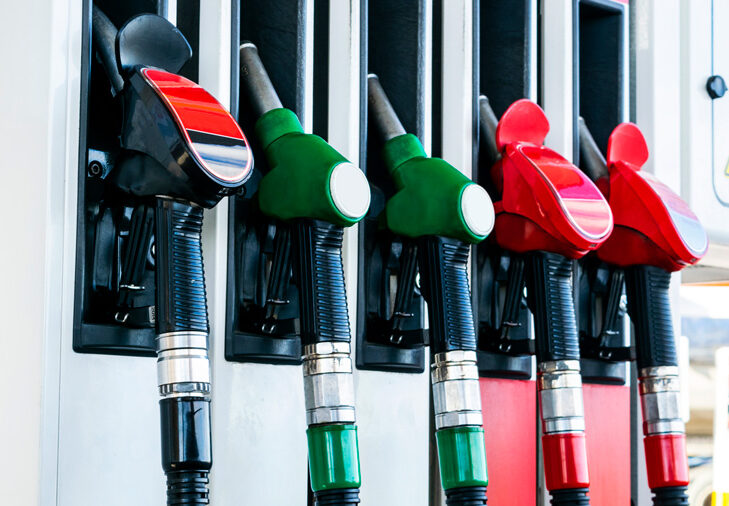
Fuel economy gains constrained by falling diesel sales
By Glenn Denton
Diesel and gasoline internal combustion engines (ICE) are still, by far, the most common powertrains for light-duty vehicles (LDV) around the globe. Regardless of negative publicity relating to toxic emissions produced by some diesel vehicles and the now infamous dieselgate scandal, diesel engines tend to be superior to equivalent gasoline vehicles in terms of fuel consumption, owing to higher thermal efficiency and compression ratios. Furthermore, countries with a higher penetration of diesel powertrains typically demonstrate lower average fuel consumption when compared to those with a high distribution of gasoline engines.

In 2017, 17% of new LDVs sold worldwide were diesel-powered, compared to the 76% propelled by gasoline. In the leading fuel economy regions around the world, such as Europe, India and South Korea, more than 35% of LDVs sold were diesel engines. In fact, of the 10 countries recording the best average fuel consumption, nine maintained a diesel share of new LDV sales above 35%. Japan rounded out the top 10, courtesy of a 10% hybrid share of new sales.
However, diesel’s share of sales has seen a rapid decline since 2015 in several major vehicle markets. Rather than transitioning to electric or hybrid vehicles, gasoline-powered vehicles have picked up the slack. The global market share of gasoline ICEs has increased since 2011.
A drop in diesel sales represents one of the major drivers in a recent reversal of fuel economy trends, according to a working paper entitled “Fuel Economy in Major Car Markets: Technology and Policy Drivers 2005-2017,” released by the International Energy Agency (IEA) in March 2019. IEA’s Energy Technology Policy Division of the Directorate of Sustainability, Technology and Outlook prepared the publication.

With a predilection for diesel powertrain technology, Europe has been hit particularly hard by this change. Diesel sales have plummeted 5-15% in the largest European Union (EU) markets, with France, Germany and the United Kingdom experiencing worsening fuel economy trends as a result. A gradual increase in electric and hybrid vehicles has been insufficient to counterbalance the decline, and corresponding gasoline vehicle sales growth. According to the IEA report, Italy was the only country in the EU to maintain diesel sales performance in 2017.
Over a quarter of the 97 million new LDV vehicles sold in 2017 occurred in China (25.5 million). Europe accounted for 16.7 million. The LDV category comprises passenger cars, passenger light trucks and light commercial vehicles below 3.5 tonnes. Newly registered LDVs were analysed over a 12-year period from 2005 to 2017 as part of IEA’s research.
The report highlighted an improvement in the global average fuel consumption of newly registered LDVs to 7.2 litres of gasoline-equivalent per 100 kilometres (Lge/100km) in 2017. The trend showed a slowing of the fuel economy improvement rate to 1.4% from 2015 onwards. Not only is this the lowest rate of fuel economy improvement since benchmarking against Global Fuel Economy Initiative (GFEI) targets began, it is well below the required 3.7% improvement rate to achieve the 2030 GFEI target.
GFEI is a partnership between the IEA, United Nations Environment Programme (UNEP), International Transport Forum of the OECD (ITF), International Council on Clean Transportation (ICCT), Institute for Transportation Studies at the University of California, Davis, and the FIA Foundation. The group has pledged to double the fuel economy of new passenger vehicles by 2030, and the entire global passenger vehicle fleet by 2050. An interim mark of 30% improvement of new LDV fuel economy is sought by 2020.
 During the initial six years of the IEA survey period advanced economies led the way in average fuel consumption gains with a 2.7% annual improvement, compared to 0.3% in emerging economies. Since 2011 this trend has flipped, emerging economies have been improving at a faster rate (2.0%) than advanced economies (1.3%). Perhaps the most alarming statistic is that 20 countries reported a reversal in the evolution of fuel economy from 2015-2017, with advanced economies recording an overall reduction in average fuel consumption per kilometre (km) of only 0.2%. Electrification of LDVs could be vital to improving average fuel economy, especially if diesel shares keep falling.
During the initial six years of the IEA survey period advanced economies led the way in average fuel consumption gains with a 2.7% annual improvement, compared to 0.3% in emerging economies. Since 2011 this trend has flipped, emerging economies have been improving at a faster rate (2.0%) than advanced economies (1.3%). Perhaps the most alarming statistic is that 20 countries reported a reversal in the evolution of fuel economy from 2015-2017, with advanced economies recording an overall reduction in average fuel consumption per kilometre (km) of only 0.2%. Electrification of LDVs could be vital to improving average fuel economy, especially if diesel shares keep falling.
The shift from diesel to gasoline is not the only factor in the reversal in fuel economy improvements. The IEA report also acknowledged the influence of a shift to larger, more energy intensive vehicles — at the expense of fuel-efficient passenger car options. Average LDV fuel consumption is typically lower in countries where engine power, displacement, vehicle weight and footprint are smaller, as these attributes negatively correlates with fuel consumption, the IEA says. The market share of sport utility vehicles (SUVs) and pick-ups has expanded 11% since 2014 and accounts for almost 40% of the LDV market worldwide. With a penchant for larger vehicles, North America and Australia are at almost 60% market share.
This does not paint a pretty picture, but it could have been far worse. Market structure changes, which include a decline in North America’s market share and the rise of markets that favour smaller more efficient vehicles, such as Europe, Japan and Korea, have tempered the downturn. The emergence of China, with strict regulations around fuel economy advancements, and India’s large share of small, fuel-efficient cars, are also determining factors.

IEA’s report also emphasized the growing body of evidence of a widening gap between laboratory test values and real driving fuel consumption. In some instances, real fuel consumption values were 50% higher than tested fuel consumption per kilometre. The report also noted a tendency for gaps to increase over time. Clearly, this is a cause for concern — limiting the impact of fuel economy standards, and diluting climate change benefits.
A September 2015 research study on the impact of real-world driving on emissions from United Kingdom cars and vans, points the finger at exploitation by vehicle manufacturers of the tolerances and flexibilities in vehicle test procedures. According to Alex Stewart, a director at Element Energy, factors such as variable testing conditions, allowable tolerances in laboratory instruments, special test-driving techniques and the use of golden vehicles, all contribute to the underestimation of fuel consumption. Golden vehicles refer to boosting performance in cars by overinflating tyres, lowering vehicle weight, and unrealistic driving conditions.
Technologies such as stop/start systems and hybrid electric powertrains also deliver disproportionate benefits during laboratory testing. Further discrepancies are apparent when auxiliary equipment, such as air-conditioning and entertainment systems, are turned off to minimise energy usage during testing.
The IEA report called for additional measures to bridge the gap between real driving fuel consumption and tested fuel economy values. Although, the authors noted the recent release of the Worldwide Harmonised Light-Duty Test Procedure (WLTP) in Europe for official fuel consumption and CO2 emissions testing, replacing the New European Driving Cycle (NEDC), that was last updated in 1997.







